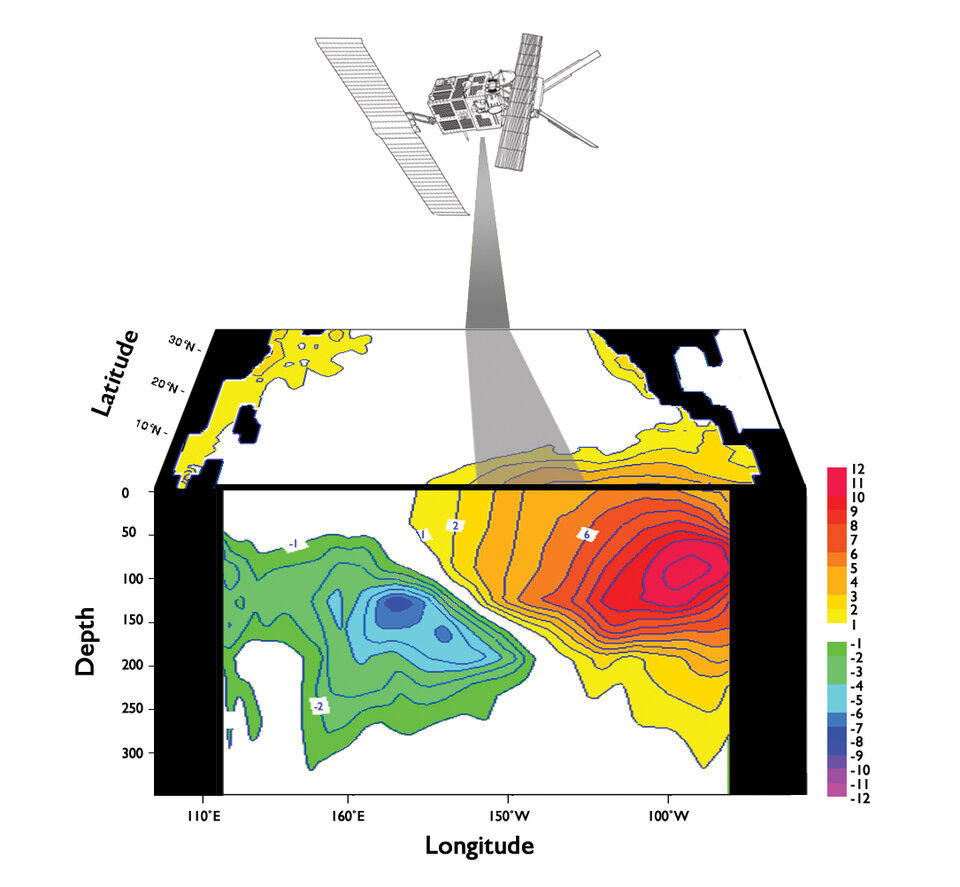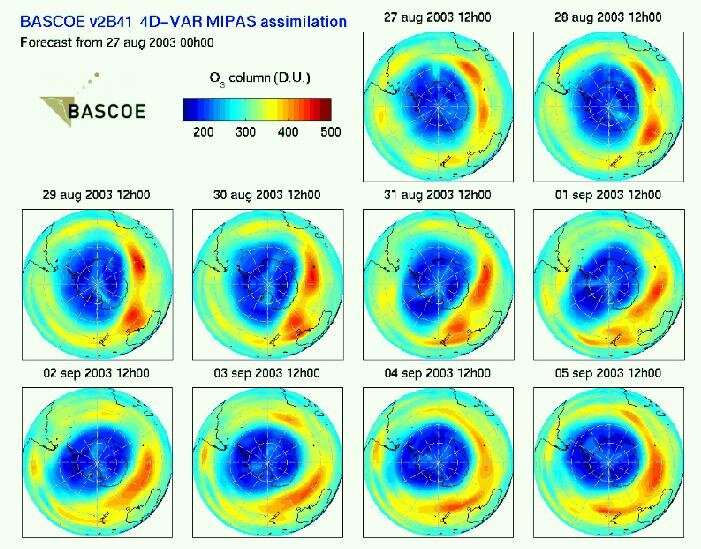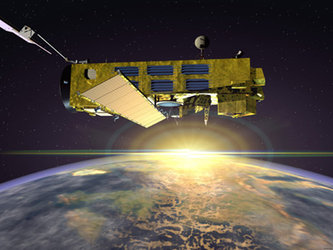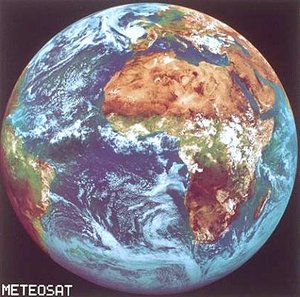Envisat Summer School will study Earth as a system
Our world is under constant satellite surveillance: every day hundreds of gigabytes of data rain down from upwards of 150 different instruments aboard the world's 50 or so active Earth Observation satellites.
The challenge for scientists is to convert this incomplete set of raw data returned from space into valid and useful depictions of our hugely complex planet. The modern way to achieve this is the subject of this year's Envisat Summer School on Earth System Monitoring and Modelling. Young scientists from all over the world can apply to attend the two-week course, which is due to take place in Frascati, Italy, this August.
Envisat, ESA's flagship Earth Observation satellite, carries ten instruments able to simultaneously monitor the land, ocean, ice and atmosphere. The theme of this year's Summer School is how to combine Earth Observation and in-situ data with numerical models to better characterise the complex linkages between the oceans, atmosphere, land and biosphere, for an improved understanding of the Earth System as a whole.
Such an integrated approach is vital not only for assessing the current status of the global environment but also to more reliably predict any future changes.
"The concept of the Earth System has arisen from many sources, but the study of climate change over the last 20 years has been a particular influence," says Professor Alan O'Neill of the Data Assimilation Research Centre at the University of Reading, one of the Summer School lecturers.
"Climate change started off being seen as solely an atmospheric problem, then it became clear that the ocean and land were more than just passive spectators, but were coupled to the atmosphere in important ways: the ocean with its high capacity to store heat, and the land with its vegetation cover and role in the carbon cycle."
This year will mark the second Envisat Summer School, extending the remit of the first ESA summer school, considered a major success by both lecturers and students – 57 young scientists attended from more than 17 countries. Leading international scientists will gather at ESA's European Research Institute (ESRIN) to give a series of keynote lectures, backed up by computer-based exercises and practical training.

"The course is aimed at new graduates and postgraduates getting started in the field of Earth Observation or taking an interest in it," O'Neill adds. "The aim is to encourage an interdisciplinary approach."
"University teaching remains wedded to individual disciplines, and that's quite understandable, but working in this field requires taking a broader view. So even if you are a physical scientist, to be successful you still need to know about chemical processes, biological processes, how models work and how Earth Observation data is acquired."
A key topic to be covered by the Summer School is 'Data Assimilation' - combining all observations available with a numerical model incorporating our best understanding of the way the world works to produce an accurate digital version of the Earth System.
Whether gathered from space or in-situ sources, observational input moves a model closer to reality, while the working of the model serves to smooth over inevitable gaps or errors in observation coverage in a consistent manner.

Operational Data Assimilation has enjoyed notable successes within the areas of long-term weather forecasting, atmospheric chemistry and oceanography. The practice of direct assimilation of satellite data into weather forecasting models has made five-day forecasts twice as accurate as they were a quarter of a century ago.
It also has a central role in forecasting the chemical state of the atmosphere - sometimes called 'chemical weather' - and in the effective monitoring the impacts of man-made pollution such as the ozone hole appearing periodically over Antarctica.
Direct assimilation of multiple satellite observations into ocean models has also become the basis for operational ocean forecasting, relied upon by an increasing segment of marine traffic. Back in 1996 detection by multiple satellites of an anomalous warming in the eastern Pacific, when fed into a coupled ocean-atmosphere model enabled the prediction of the 1997 El Niño event six months ahead of time.
This year's Envisat Summer School is due to start on Monday 16 August and finish on Thursday 26 August. Applications can be made until Monday 10 May. For more information and to apply online click here.










